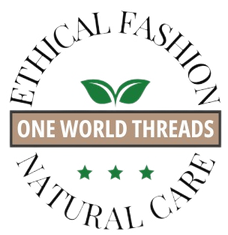
Eco-Friendly Materials
In today’s environmentally conscious world, the fashion industry is undergoing a significant transformation. Consumers are increasingly aware of the environmental impact of their clothing choices, driving a surge in demand for eco-friendly materials. This comprehensive guide delves into the world of low-impact fibers, exploring various sustainable options like organic cotton, recycled polyester, hemp, and bamboo.
What is Eco-Friendly Materials
The fashion industry is a major contributor to environmental pollution, generating roughly 20% of global wastewater and 10% of global carbon emissions. Eco-friendly materials can minimize this damage. Sourced from renewable resources, these materials often require less water, energy, and chemicals compared to conventional options. By choosing eco-friendly materials, we can significantly reduce our carbon footprint and support sustainable practices in the fashion industry.
Eco-Friendly Material Spotlight: Organic Cotton – A Sustainable Staple
Organic cotton is grown without synthetic pesticides or fertilizers, making it a more environmentally friendly option than conventional cotton. Consumers can support practices that promote soil health and biodiversity by opting for organic cotton. Additionally, organic cotton farming typically consumes 71% less water than conventional cotton, making it a more sustainable choice in drought-prone regions.
Pros:
- Grown without synthetic pesticides or fertilizers, making it significantly better for the environment compared to conventional cotton.
- Supports practices that promote soil health and biodiversity.
- Uses 71% less water than conventional cotton, making it a sustainable choice in drought-prone regions.
Cons:
- Organic cotton can sometimes be more expensive than conventional cotton due to lower yields.
Eco-Friendly Material Spotlight: Recycled Polyester – Giving New Life to Old Materials
Recycled polyester is made from post-consumer plastic bottles or other recycled polyester garments. By diverting 25 billion plastic bottles from landfills annually and reducing the need for virgin polyester production, recycled polyester helps minimize environmental pollution and resource depletion. Despite its origins, recycled polyester can be just as high-quality and versatile as virgin polyester, making it a viable alternative for eco-conscious fashion brands.
Pros:
- Made from post-consumer plastic bottles or other recycled polyester garments, diverting 25 billion plastic bottles from landfills annually.
- Reduces the need for virgin polyester production, minimizing environmental pollution and resource depletion.
- Offers high quality and versatility, making it a viable alternative for eco-conscious fashion brands.
Cons:
- The recycling process itself can require some energy.
Eco-Friendly Material Spotlight: Hemp – The Wonder Fiber
Hemp is one of the most sustainable fibers available, requiring minimal water, pesticides, and synthetic fertilizers to grow. It’s also a fast-growing crop that can thrive in various climates, making it highly adaptable and resilient. In addition to being eco-friendly, hemp fabric is durable, breathable, and naturally resistant to mold and UV rays, making it an excellent choice for clothing, accessories, and even home textiles.
Pros:
- One of the most sustainable fibers available, requiring minimal water, pesticides, and synthetic fertilizers to grow.
- Fast-growing and thrives in various climates, making it highly adaptable and resilient.
- Offers exceptional durability, breathability, and natural resistance to mold and UV rays.
- Perfect for clothing, accessories, and even home textiles.
Cons:
- Hemp fabric can be slightly rougher than some other materials, although processing techniques can improve softness.
Eco-Friendly Material Spotlight: Bamboo Fabric – Sustainable Potential with Processing Considerations
- Bamboo itself is a fast-growing renewable resource and requires minimal pesticides or fertilizers.
- However, the process of turning bamboo into fabric can be chemically intensive depending on the method used.
Some methods use harsh chemicals to break down the bamboo cellulose, negating the environmental benefits.
Pros:
- Bamboo is a fast-growing renewable resource requiring minimal pesticides or fertilizers.
Cons:
- The processing of bamboo into fabric can be chemically intensive depending on the method used. Some methods utilize harsh chemicals to break down the bamboo cellulose, negating the environmental benefits.
Choosing Sustainable Bamboo: Look for certifications like FSC (Forest Stewardship Council) or Lenzing Modal® which indicate sustainable processing methods.
FAQ Section: Answering Your Burning Questions
Q: Are low-impact fibers more expensive than conventional materials?
-
A: While low-impact fibers may sometimes come with a higher price tag due to their eco-friendly production processes, the long-term environmental and sustainability benefits make them a worthwhile investment.
-
Q: How do I care for clothing made from low-impact fibers?
-
A: Care instructions for clothing made from low-impact fibers are similar to those for conventional materials. However, to prolong the lifespan of your garments and minimize environmental impact, consider washing them in cold water, air-drying whenever possible, and avoiding harsh chemical detergents.
-
Q: Can I find stylish clothing made from low-impact fibers?
A: Yes! As demand for sustainable fashion continues to rise, many brands offer stylish and trendy clothing options made from low-impact fibers like organic cotton, recycled polyester, and hemp. Whether you’re looking for basics or statement pieces, there’s something for everyone in the world of eco-friendly fashion.
Embracing Sustainability Through Eco-Friendly Materials
As consumers, we hold the power to drive positive change in the fashion industry by making conscious choices about the materials we wear. By opting for eco-friendly materials like organic cotton, recycled polyester, and hemp, we can significantly reduce our environmental footprint and support a more sustainable future for fashion. Let’s embrace the beauty of eco-friendly materials and make a difference, one garment at a time.


One thought on “The Ultimate Guide – Unlocking 4 Eco-Friendly Materials : Embracing Sustainable Fashion”